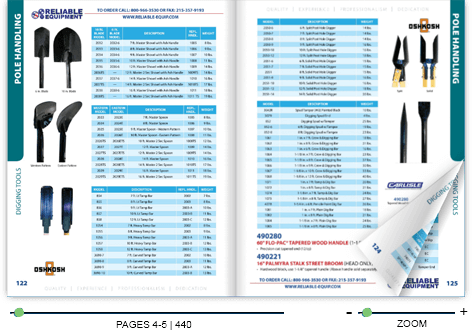


This article aims to break down the key differences between digital catalog publishing & printed catalog publishing. Let’s get started.
A well-designed catalog has been a standard marketing piece for companies for a long time, whether it’s to highlight a set of home decor items, fashion items, or specialty foods. It serves as an intermediary between companies and consumers, presenting products in an aesthetically pleasing, easy-to-grasp format. Yet, with the rise of technology and shifting consumer tastes, a question has arisen for contemporary marketers and companies alike: To digital catalog publishing or to printed catalog publishing? Both mediums have their advantages, and it comes down to your business objectives, expense, and target market.
To decide whether digital or printed catalogs align best with your needs, it’s crucial to compare their distinctive characteristics, benefits, and limitations. Below, we’ll weigh these formats across essential factors like reach, environmental impact, engagement, cost, and more.
Digital Catalogs:
Online catalogs naturally have wider reach. Uploading them on the internet allows companies to instantly make their catalogs available to a global market. Either via email campaigns, social media, or putting them on websites, online catalogs provide customers with the flexibility of browsing your products at any time, from anywhere, right from their own devices.
Printed Catalogs:
Print catalogs excel at reaching highly niche audiences. If your customer base is among the older generations or customers who want tangible experiences, a printed catalog creates a stronger sense of connection. A few individuals have a higher perception of quality and reliability from a stunningly printed catalog.
Winner: Digital catalogs win here, as they provide much greater accessibility and unlimited reach.
Digital Catalogs:
Issuing a digital catalog can be cost-effective, particularly for companies that want to save on printing, distribution, and storage expenses. Software such as digital catalog software allows firms to create, revise, and reissue catalogs without the costs of reprinting.
Printed Catalogs:
Printing is by nature costly, particularly for companies that need high-quality images and seasonal catalogs. Factor in shipping, distribution, and warehousing expenses, and the cost of creating printed catalogs can be prohibitive.
Winner: Digital catalogs are more cost-effective in the long term, particularly for companies looking to update their content regularly.
Digital Catalogs:
In light of consumer sensitivities toward the environment, digital catalogs are green in concept. They don’t consume paper, ink, and energy to move and deliver them, rendering them a more sustainable option for green-aware companies.
Printed Catalogs:
Despite advancements in sustainable print production methods, having physical catalogs entails a bigger environmental cost. Printing takes paper, ink, and power-consuming production, in addition to shipping and waste logistics.
Winner: Digital catalogs emerge as the winner, eliminating much of the environmental toll.
Digital Catalogs:
Publishing digitally enables multimedia content such as videos, animations, click-to-active buttons, and even AR (Augmented Reality) capabilities. Not only do these make digital catalogs interesting, but they also provide smooth shopping experience by incorporating clickable links that enable direct purchase of products by the customers.
Printed Catalogs:
Interactivity is not present in printed catalogs, but their physical touch offers a one-of-a-kind sensory experience. Quality paper and bold visuals have the ability to create emotions, which are a must for luxury or high-end brands that wish to establish intimate relationships with customers.
Winner: Digital catalogs provide unparalleled interactivity and accountability, although print catalogs might yet dominate in forging emotional, haptic experiences.
